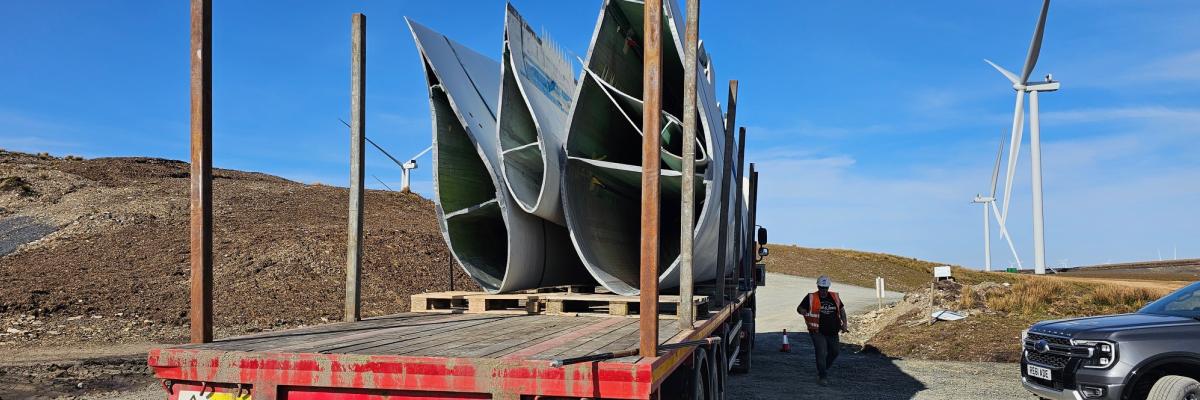
By Steven Lindsay
End of life windfarms are proof that our industry - engineers, designers, planners, project managers, construction and operations personnel - all worked together to create and operate a clean energy generating project that did the job for 25+ years. As long as we plan and execute decommissioning correctly then we have nothing to fear and lots to gain from talking publicly about decommissioning.
“Bring down the turbines, scrap the steel and do something with the blades.”
Easy, right? If it wasn’t for all that media interest in the bloody blades. So, let’s chuck some money at blade R&D so we’re seen to be doing something.
Windfarm decommissioning should not be an afterthought. In fact, treating windfarm decommissioning as merely a reverse construction project leads to missed opportunities and reputational damage.
The first step in unlocking those opportunities is realising that there’s a LOT more to windfarm decommissioning than the wind turbines themselves. In fact, the turbines are the easy part.
Windfarms have roads, cables, crane pads, laydown areas, sub stations, transformers, met masts, foundations, re-bar, habitat management areas, borrow pits, gates, fences and 1001 other elements that work together to generate clean, safe energy.
“Ach, the repowered site will use a lot of that,” I still hear said, “leave it be.”
Really? What about the septic tank for the old sub station? What do we do with that?
Say we re-use road stone from old roads that are not going to be used as part of the new windfarm. What do we put in its place? What does the landowner think? What does the community think of poorly planned decommissioning? What do the statutory stakeholders think?
Increasingly we are seeing statutory stakeholders say they want the land reinstated back to its original state pre-windfarm. That involves a lot of work.
Decommissioning ‘correctly’ ensures all of the above is assessed, addressed and implemented.
It needs to be carefully planned out. Planned so that material arising from decommissioning is sent to acceptable destinations. Planned so that the landscape it was sited on is still capable of original use, planned so that it is in adherence to local and national policies and, in the case of repowering, planned so that it can enhance the siting and operation of new, larger and more efficient wind turbines.
Do it right and we as a sector gain support from statutory and non-statutory stakeholders, get backing from policy makers and, importantly, we secure support from the communities surrounding our sites when we are seen to responsibly plan and manage the entire lifecycle of our windfarms.
The end result of all that, with a carefully assessed and executed windfarm decommissioning project, is we gain more megawatts in the ground, cleaner power, progress towards more carbon free energy, and we gain the satisfaction of doing what’s right and what’s best for our landscapes.
We also see financial benefits from having optimised decommissioning processes and really importantly, the public trusts us to do the right thing.
For too long we have been trying to work under the radar when it comes to end-of-life windfarms.
As a sector let’s stand up and say yes, we are now at the stage of planning how we bring down our onshore wind fleet and we will endeavour to do it carefully and responsibly.
When we, as an industry, continue to prove ourselves to be trustworthy, responsible, careful and considerate during decommissioning, everyone wins.
